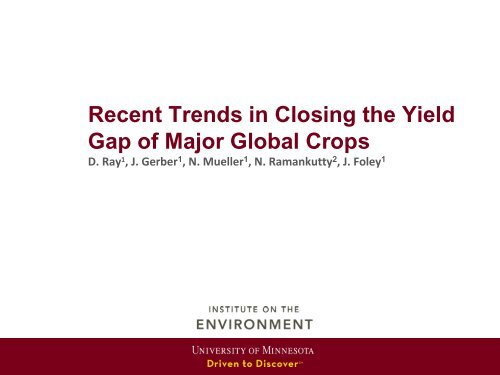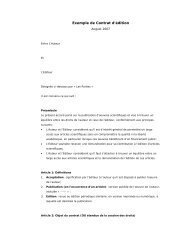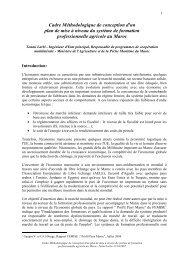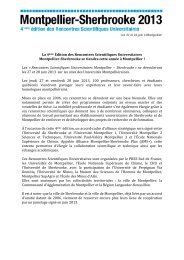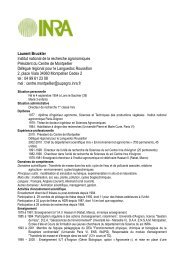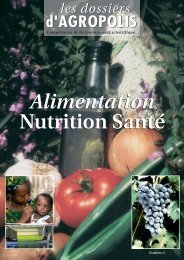Recent Trends in Closing the Yield Gap of Major Global Crops
Recent Trends in Closing the Yield Gap of Major Global Crops
Recent Trends in Closing the Yield Gap of Major Global Crops
Create successful ePaper yourself
Turn your PDF publications into a flip-book with our unique Google optimized e-Paper software.
<strong>Recent</strong> <strong>Trends</strong> <strong>in</strong> Clos<strong>in</strong>g <strong>the</strong> <strong>Yield</strong><br />
<strong>Gap</strong> <strong>of</strong> <strong>Major</strong> <strong>Global</strong> <strong>Crops</strong><br />
D. Ray 1 , J. Gerber 1 , N. Mueller 1 , N. Ramankutty 2 , J. Foley 1
Introduction<br />
•How to determ<strong>in</strong>e yield gaps<br />
•How are yield gaps chang<strong>in</strong>g
Outl<strong>in</strong>e<br />
•Data sources<br />
•Potential yield methodology<br />
•<strong>Yield</strong> trend methodology<br />
•Results
Approaches to yield gaps.<br />
Simulation<br />
Field trial<br />
Analog climate
Data sources<br />
•<strong>Yield</strong> and area data for year 2000 from Monfredaet al. 1<br />
• FAO Data used for <strong>in</strong>terannual variation<br />
•WORLDCLIM climate (static).<br />
1 Monfreda, C., et al. (2008), Farm<strong>in</strong>g <strong>the</strong> planet: 2. Geographic distribution <strong>of</strong> crop areas, yields, physiological types and net primary<br />
production <strong>in</strong> <strong>the</strong> year 2000, <strong>Global</strong> Biogeochem. Cycles, 22, GB1022, doi:10.1029/2007/GB002947
<strong>Yield</strong> potential calculation example<br />
Distribution <strong>of</strong> yields with<strong>in</strong><br />
<strong>the</strong> “Paris” climate-soils b<strong>in</strong><br />
Wheat yields<br />
95% percentile empirical yield<br />
is potential yield for this crop<br />
for this climate b<strong>in</strong>
Apply this method for all b<strong>in</strong>s
<strong>Yield</strong> gap results
Fractional yield gap
How does empirical method compare to simulation<br />
Compare empirical method<br />
predictions to a crop model <strong>of</strong><br />
ra<strong>in</strong>-fed rice yield <strong>in</strong> India<br />
(InfoCrop, Aggarwalet al.).
How to extend to o<strong>the</strong>r years<br />
•Assume cultivated area unchanged<br />
•7 year average to get yield data po<strong>in</strong>t<br />
•Scale yield based on FAO data
<strong>Yield</strong> gap trends<br />
•Would like to divide this for comparison<br />
•Need to see if signal is due to changes <strong>in</strong> gap or<br />
potential
<strong>Yield</strong> gap trends
Future work<br />
Extend results to subnational level<br />
Improve <strong>the</strong> comparison to o<strong>the</strong>r methods<br />
Extend analysis to more years, publish data
Thank you<br />
James Gerber<br />
jsgerber@umn.edu


